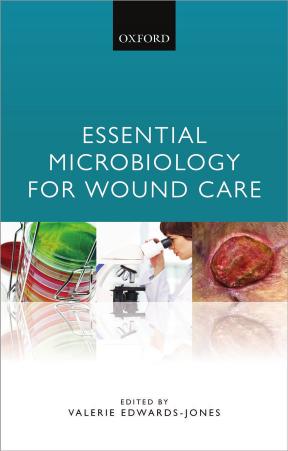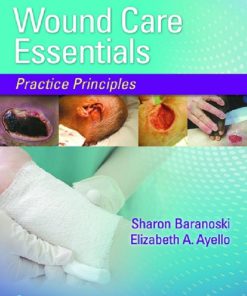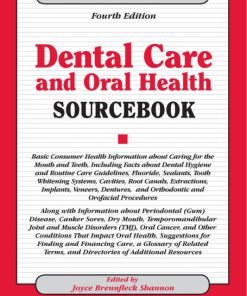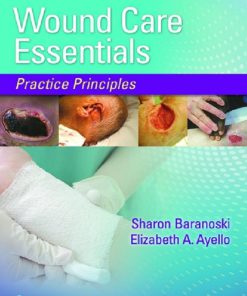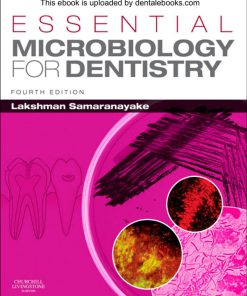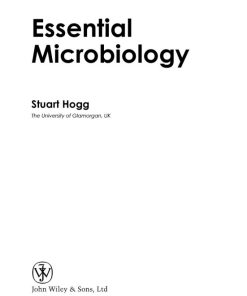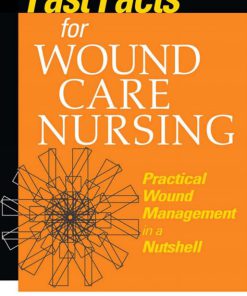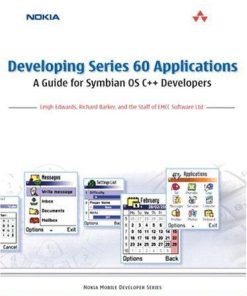Essential Microbiology for Wound Care 1st Edition by Valerie Edwards Jones ISBN 0191025089 9780191025082
$50.00 Original price was: $50.00.$25.00Current price is: $25.00.
Authors:Valerie Edwards-Jones , Series:Pathology [191] , Author sort:Edwards-Jones, Valerie , Languages:Languages:eng , Published:Published:Mar 2017 , Publisher:Oxford University Press
Essential Microbiology for Wound Care 1st Edition by Valerie Edwards Jones – Ebook PDF Instant Download/Delivery. 0191025089, 9780191025082
Full download Essential Microbiology for Wound Care 1st Edition after payment
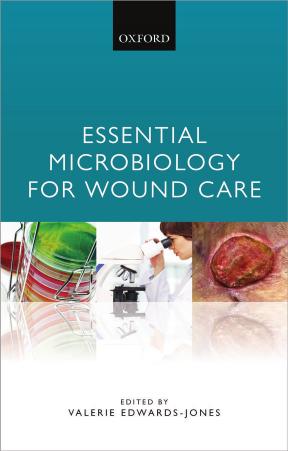
Product details:
ISBN 10: 0191025089
ISBN 13: 9780191025082
Author: Valerie Edwards Jones
Many healthcare practitioners understand the role microbiology has within the management of their patients, particularly when this involves wound care and the healing process. However, basic medical and nursing training does not always cover the microbiology of wound care in any great depth. Essential Microbiology for Wound Care is an indispensable reference aid that covers the key areas and science of microbiology from a point of view relevant to wound care practitioners wishing to enhance their skills. Written by specialists in the areas of microbiology and wound care, the book explains the basic science of microbiology and how it applies to wound care from simple infections to complex non-healing wounds, covering areas such as the diagnosis of infection, antimicrobial agents, virulence, and the treatment of infection, and infection control. Current thought in the field is also discussed, covering the improved understanding of the role of microorganisms and biofilms, newly-arising management strategies, and the increasing concern about the rapid development of antimicrobial resistance and how this may impact the administration of antibiotics in the future. Prevention and alternative forms of treatment in the field of wound care for the diabetic foot, burns, acute, and chronic wounds are also included. From the basic science to biofilms, Essential Microbiology for Wound Care provides a thorough understanding of the basic principles of microbiology in an accessible style that makes it a key reference in the field of wound care.
Essential Microbiology for Wound Care 1st Table of contents:
Chapter 1 Introduction
Introduction to wound microbiology
What is microbiology?
Can all microorganisms cause disease in humans?
How humans are protected from infection: the immune system
What is non-specific immunity?
What is specific immunity?
Conclusion
Further reading
References
Chapter 2 Microbiology: the basics
Objectives
Introduction to the basics of microbiology
Different groups of microorganisms
Bacteria
How do we assign bacteria into their species?
Viruses
Fungi
Parasites
Growth and reproduction of bacteria
Bacterial growth in the laboratory
How does a microorganism cause wound infection?
Conclusion
Further reading
References
Chapter 3 Collection, transport, and laboratory processing of wound, tissue, and bone samples
Objectives
Introduction to infected wound sample collection and processing
Diagnosis of wound infection
Sample collection
Sampling the wound
Sample types
Wound swab
Taking a wound swab
Biopsy
Pus
Transport of specimens to the laboratory
Storage of samples
Laboratory processing of wound samples
Microscopy
Culture
Environmental conditions required for bacterial growth
Temperature
Oxygen
Facultative anaerobic bacteria
Nutrients
General purpose media
Selective culture media
Bacterial growth
Bacterial identification and antibiotic sensitivity testing
Biochemical identification of bacterial isolates
Performing an antibiotic sensitivity test
Non-culture methods used to identify pathogens in wounds
The polymerase chain reaction
PCR-denaturing gradient gel electrophoresis
Further reading
References
Chapter 4 Acute versus chronic wounds: microbiological differences
Objectives
Introduction to the microbiological differences between acute and chronic wounds
Classification of wounds and wound types
Acute wounds: the basics
Chronic wounds
Chronic wound types
Pressure ulcers
Arterial and venous ulcers
Diabetic ulcers
Microbiology of acute and chronic wounds
Sampling the wound: quantitative versus qualitative microbiology
Factors affecting microbial growth
Oxygen insufficiency
Microbiological aspects of burns
Fungal infections in the diabetic foot
The role of fungi in chronic wounds
Conclusion
References
Chapter 5 Wound pathogens
Objectives
Introduction to wound pathogens
Normal flora of the skin
Common wound pathogens
Staphylococcus aureus
Complications of Staphylococcus aureus skin/wound infections
Streptococcus pyogenes (group A streptococci)
Complications of Streptococcus pyogenes infections
Necrotizing fasciitis
Erysipelas
Other streptococci
Pseudomonas aeruginosa
Coliform bacilli
Anaerobic organisms
Clostridium perfringens
Other anaerobic bacteria
Rarer pathogens and associated infections
Erythrasma
Erysipeloid
Cutaneous mycobacterial infection
Mycobacterium marinum
Buruli ulcer
Vibrio vulnificus
Erythema chronicum migrans
Further reading
References
Chapter 6 Understanding biofilms
Objectives
Introduction to biofilms
Background
Evidence of biofilms in wounds
Biofilm development
Attachment
Maturation
Dispersal
The role of extracellular matrix
Immune evasion by microbial cells within mature biofilms
Diagnosing wound biofilms
Treatment and prevention of biofilms in wounds
Prevention of attachment
Interference with quorum sensing
Disruption of an established biofilm
Conclusion
References
Chapter 7 Antimicrobial agents used in wound care
Objectives
Introduction to antimicrobial agents used in wound care
Background
Antimicrobials
Antibiotics
Antiviral agents
Antifungal agents
Antiparasitic agents
Disinfectants
Antiseptics
Bacteriostatic versus bactericidal activity of antimicrobial agents
Methods for testing antimicrobial agents
Minimal inhibitory concentration
Interpretation of test results
Factors affecting MIC/MBC
Disc susceptibility testing
Therapeutic monitoring
Antibiotic assays
Serum inhibitory titre
When should you stop using topical agents on wounds?
Systemic treatment strategies in wound care
Types of topical antimicrobials
Silver
Different forms of silver
Iodine
Cadexomer iodine
Inadine
Polyhexamethylene biguanide
Octenidine dihydrochloride
Alternate forms of antibacterial agents
Honey
Larval therapy
Plants and plant oils
Conclusion
References
Chapter 8 Dressings used in wound care
Objectives
Introduction to dressings used in wound care
Background
Wound bed preparation
Dressing infected wounds
Symptom management
Controlling bioburden: dressings for wound debridement
Dressings for autolytic debridement
Dressings for enzymatic debridement
Dressings for biosurgical debridement
Dressings for mechanical debridement
Controlling bacterial burden: antimicrobial dressings
Dressings for exudating wounds (regulation of moisture balance)
Alginate
Hydrofiber
Polyurethane foam dressings
Negative pressure wound therapy
Dressings for malodorous wounds
Activated charcoal dressings
Dressings to alleviate wound pain
Conclusion
Further reading
References
Chapter 9 Infection prevention and control
Objectives
Introduction to infection prevention and control
Healthcare-associated infections
The role of the wound in HCAI
Current problems including costs of management
What is infection prevention and control?
Personal protective equipment
Aseptic technique
‘Clean’ techniques for chronic wounds
Screening for healthcare-associated infections
Future problem organisms
References
Chapter 10 Treatment strategies for wound infection
Objectives
Management of wound infection
Wound infection
Types of wounds
Surgical site infection
Antimicrobials for infected wounds
Antibiotics in wound management
Debridement and cleansing
Conclusion
References
Chapter 11 Future of wound care
Introduction to the future of wound care
Developing products that clean and debride the wound rapidly without pain or further damage
Developing products and techniques that speed up wound healing
Developing products and techniques that reduce scarring
Conclusion
People also search for Essential Microbiology for Wound Care 1st:
essential microbiology for wound care
what is basic wound care
what do you disinfect a wound with
questions about wound care
what to document for wound care
You may also like…
eBook PDF
Dental Care and Oral Health Sourcebook 5th Edition by Keith Jones ISBN 0780815319 9780780815315
eBook PDF
Essential Microbiology for Dentistry 4th edition by Lakshman Samaranayake 0702046957 9780702046957

